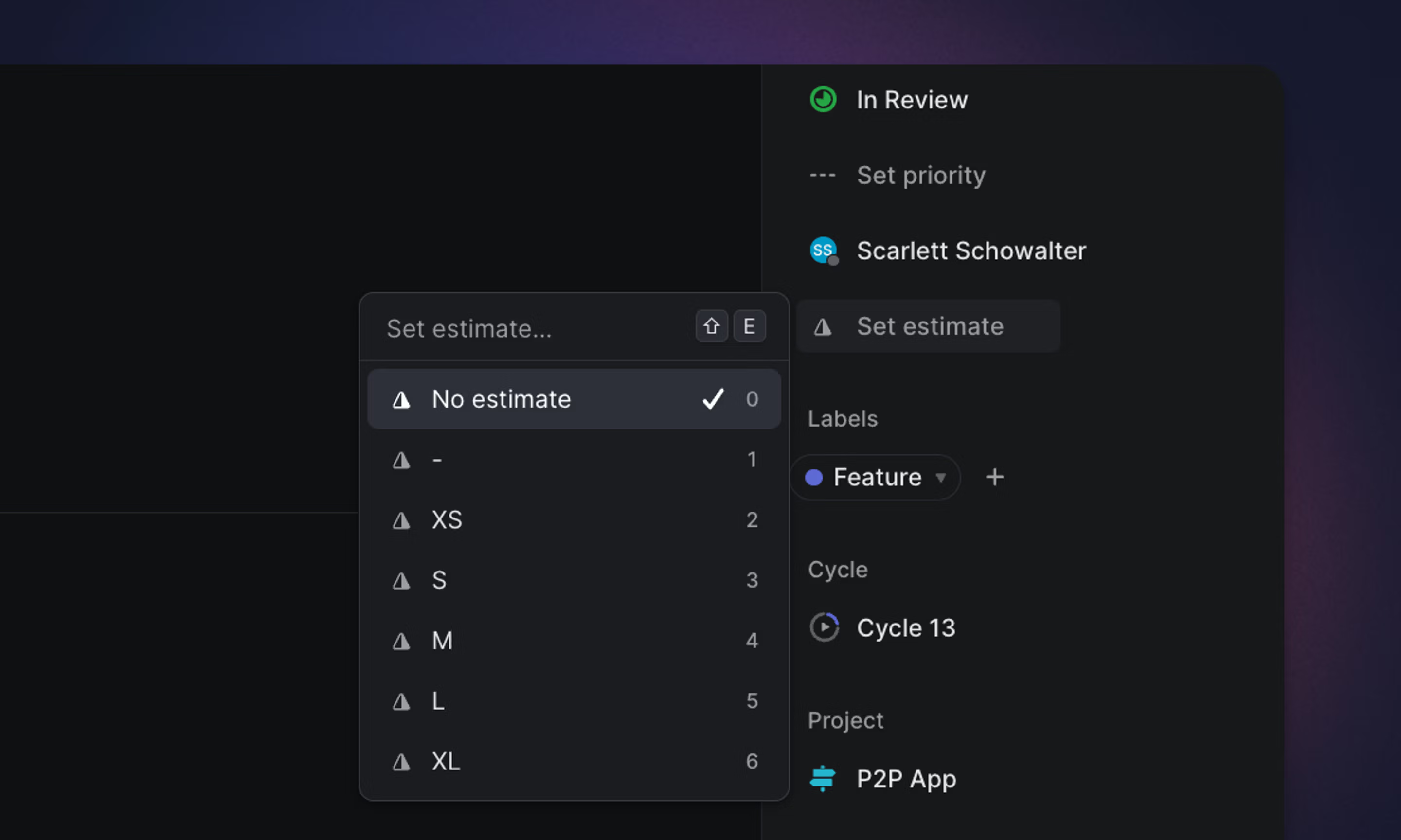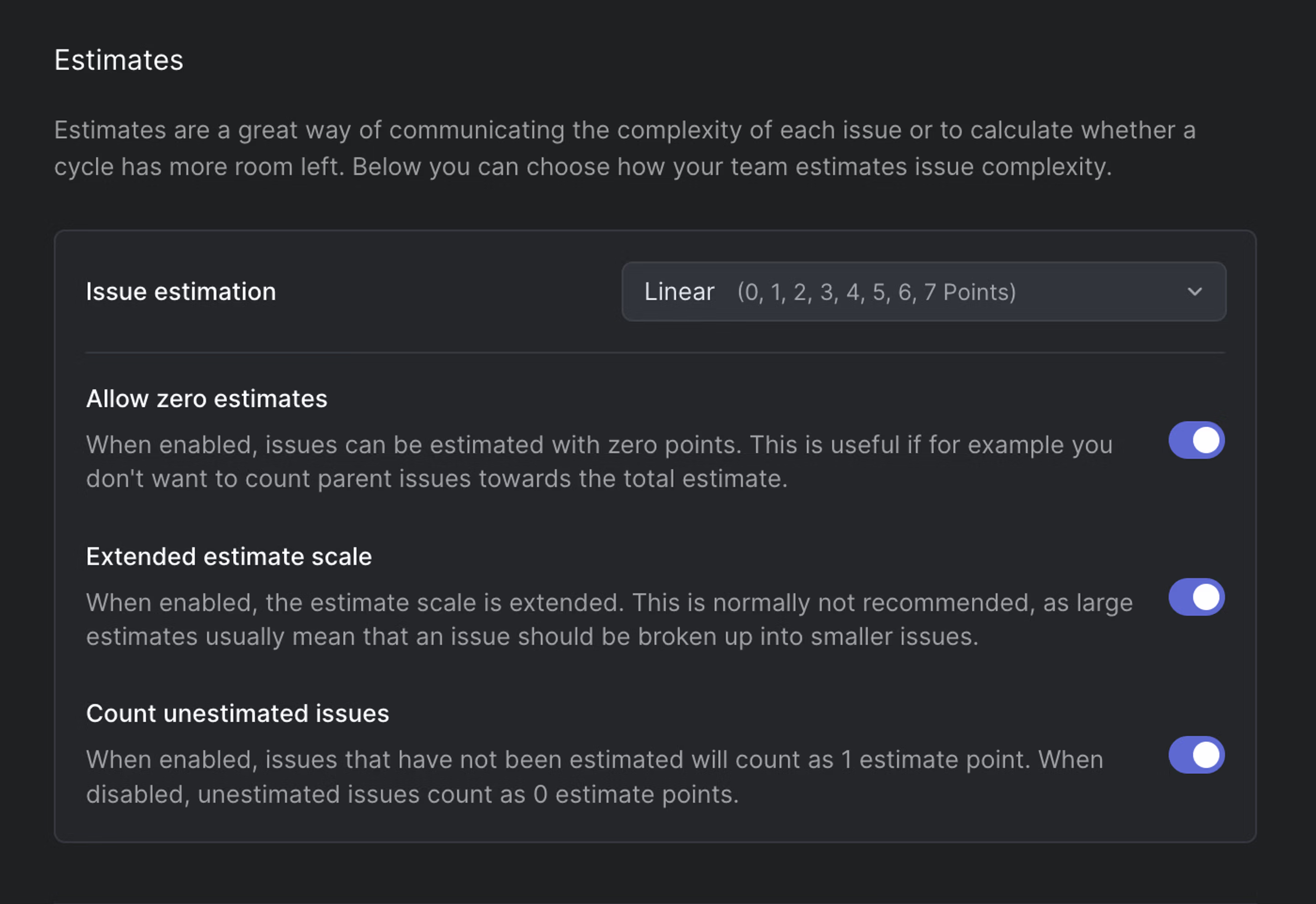Estimates
Show how much effort each issue will take.

Overview
Use estimates to describe the complexity or size of an issue. Cycles and projects use estimates to calculate effort and related statistics. You'll opt into estimates on a team level as well as choose which estimate scale to use.
Configure
Go to Team Settings > General > Estimates to enable the feature. Teams can use different estimate scales and configurations, even if they're working together on the same project.

Scale range options
| Scale | |||||
|---|---|---|---|---|---|
| Exponential | 1 | 2 | 4 | 8 | 16 |
| Fibonacci | 1 | 2 | 3 | 5 | 8 |
| Linear | 1 | 2 | 3 | 4 | 5 |
| T-Shirt | XS | S | M | L | XL |
When T-Shirt sizes require translation to numerical values (for display in graphs, for instance,) they follow the Fibonacci scale.
Extended estimate scales
Enable the extended scale to add two additional values to your scale.
| Extended Scale | ||
|---|---|---|
| Exponential | 32 | 64 |
| Fibonacci | 13 | 21 |
| Linear | 6 | 7 |
| T-shirt | XXL | XXXL |
Zero estimates
Allow zero estimates by toggling this option on in estimate settings. By default, we count unestimated issues as one point but you can disable this in estimate settings as well.
Add, edit, or remove estimates
Add estimates when creating or updating issues with the keyboard shortcut Shift E. The same keyboard shortcut can be used to edit or remove the estimate.
Filter for estimates
Find issues with specific point values by filtering for estimates. The shortcut F will open the filter menu and you can select estimates from there. This is especially helpful when creating custom views and searching through the backlog.
Analytics
When you see the word effort, that refers to estimate. When estimates are not enabled, we calculate statistics using a default value of 1 estimate point per issue. T-shirt estimates map to the Fibonacci scale.
If you've enabled estimates, we'll use the estimate values to calculate percentage completion and effort in cycle and project graphs. The top bars on most views will show the total issues count or total estimate value next to the view's name. Hover over the number to see both values.
When estimates are too large, refine issue scope
Larger estimates usually mean that there is uncertainty about the issue's complexity. We find that breaking up issues into smaller ones is the best approach.